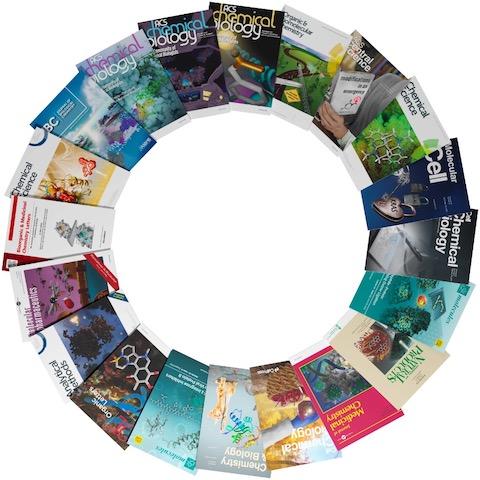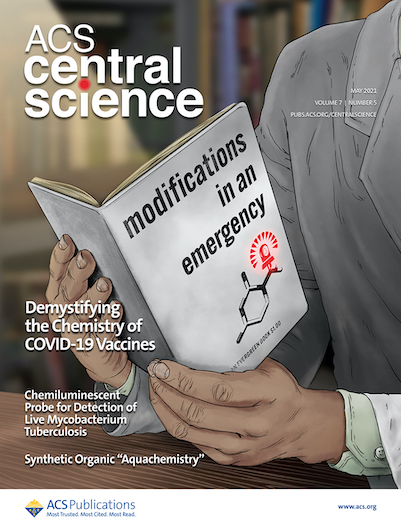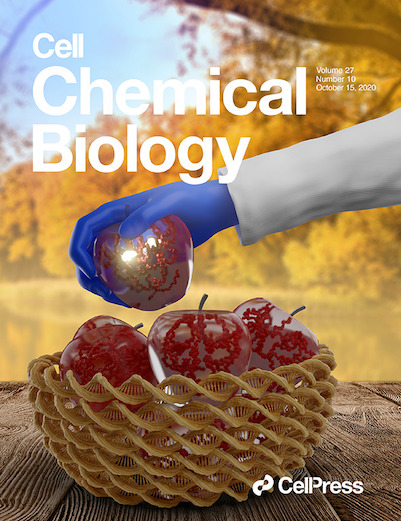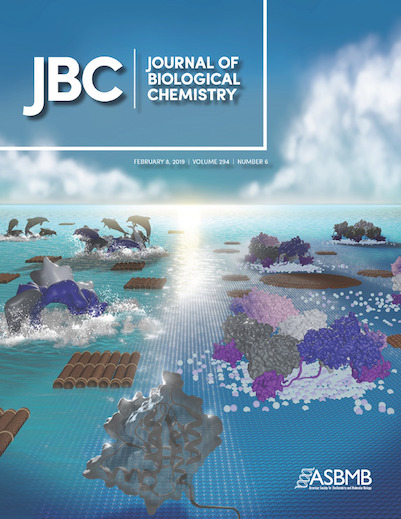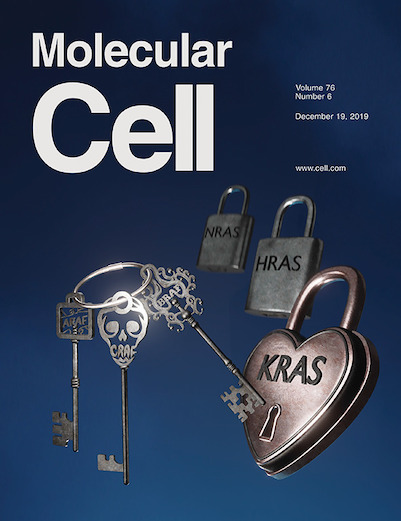Though the era of print may be past its glory days, many of us still recognize the impact of being featured on the cover of a magazine. Glossy magazines like Time, Vogue, and Rolling Stone spotlight many of the celebrities society idolizes.
In fact, you could argue we’re told who to idolize based on who’s been featured on the cover of a magazine. Journalists and photographers vie for the opportunity to work on a cover feature. Everything else in the magazine is secondary to the cover story. But what about scientific journal covers?
There, a cover image’s impact is slightly different. The purpose isn’t necessarily to present the most prized story (and it’s been shown that having a paper featured on the cover doesn’t guarantee more impact), but rather to feature an eye-catching and thought-provoking scientific image that entices researchers to take a closer look at the novel ideas presented in the journal. Journals accept submissions of cover art that editors didn’t commission. It’s a chance for scientists to showcase an extension of their work in a new way.
Many libraries no longer store hard copies of scientific journals, so the images often live in a prominent place on the journal’s website, attracting researchers to peruse the papers within. Nevertheless, the allure remains. Being featured on a cover still feels like something to brag about. But how do you get on the cover?
Behind the scenes in Frederick National Laboratory’s Scientific Publications, Graphics & Media department, illustrator Joe Meyer is making scientists’ cover dreams come true. While he’s professionally worked on illustrations for over two decades, about a third of that time focused on scientific images, Meyer has also worked on around 35 cover image designs over the last several years.
More than 20 of those designs have been selected as cover images. Meyer’s cover designs have been featured in various publications, including Cell Chemical Biology, Chemical Science, and Nature Chemical Biology.
A Marriage of Science and Art
Unlike working on a scientific figure or illustration, where accuracy is the primary driver of the design, a cover’s design needs to be accurate while also being attention-grabbing, artistically in line with the journal’s visual style, and accommodating of the text that the journal’s editors will inevitably need to lay over it.
Meyer said, “When you’re thinking about a cover ... The visual interest needs to be more predominant versus the data.”
Some of the more imaginative designs he has enjoyed working on featured a rattan basket where the weave was made of DNA strands, an analogy for RAS “rafts” and KRAS dolphins jumping out of ocean “water” (lipid layer), and a design that was fully hand-drawn in a cartoon-illustration style.
“There is room for more creativity, analogy, and humor in cover design. I … have benefited so much from [Meyer’s] open-mindedness, communication, and pride he takes in his work. It has definitely helped disseminate and broaden the reach of our science,” said Jordan Meier, Ph.D., a senior investigator in the Chemical Biology Laboratory at NCI at Frederick’s Center for Cancer Research, who has worked with Meyer on several cover designs.
Meyer has worked on more traditional designs as well, such as with photographs and chemical structures. Considering the journal’s visual style is essential.
“It’s [about] having an eye for that sort of ability to blend what the journal’s trying to do with [the researcher’s] science and marry the two into sort of a final piece that is going to be cohesive,” Meyer said.
Meyer certainly seems to have that skill.
“The great thing about Joe is that … he has the nice mix of telling a story with the appropriate artistic touches while doing justice to both the art and the science,” said Kedar Narayan, a senior scientist and group leader in the Center for Molecular Microscopy at the Frederick National Laboratory, who has worked with Meyer on an accepted journal cover.
Even if you think you’ve figured out the perfect image, you’re trying to pin down an elusive aesthetic quality, one that can be very subjective. For example, not everyone likes the same colors, and it’s hard to predict an editor’s preferences.
Journals typically select covers from several submissions, so sometimes a great design gets passed over in favor of another. Meyer makes sure the researchers he works with are satisfied with the designs either way, and they often end up using the designs for social media, laboratory websites, or talks if they aren’t selected by the journal.
“Since I [‘discovered’ Meyer’s work in 2016], Joe has been an invaluable resource, having created a total of seven published journal covers for us alone. … Journals usually want cover art that grabs the readers’ attention, and Joe is an extremely creative and gifted artist who can produce this type of art. … He richly deserves this recognition,” said Terry Burke, Ph.D., a senior investigator in the Chemical Biology Laboratory, who has worked with Meyer on several covers.
A Collaborative Process
Meyer’s process is a shared effort between scientist and artist. Sometimes a researcher will come with a napkin sketch or a fully-fledged idea that needs to be refined. Other times, a researcher will come with a figure and need help brainstorming ideas for how to create an interesting cover. Either way, the process starts with a conversation and results in Meyer creating a mock-up of an agreed-upon idea.
“Joe is fantastic, and it is a real collaboration. He can take a kernel of an idea and turn it into a beautiful or unexpected concept. There are also cases where things do not go according to plan, and the end product doesn’t do much but make us both laugh. A sense of humor is an important skill for both illustrators and scientists, I think,” Meier said.
After initial drafting, Meyer works with scientists to refine the image until they have something they want to submit to a journal. Usually, Meyer communicates with one researcher, but the final design will often receive input and further tweaks from other researchers who worked on the paper or in the researcher’s laboratory.
“Working with scientists is almost like working with other artists. They really have a lot of creativity,” Meyer said.
To figure out the design’s layout, Meyer will often use a journal’s previous cover as a “template” to know where room should be left for the journal title and other information that goes on the cover.
For inspiration, Meyer draws upon his artistic interests, seeing what other artists are doing and what tools they’re using, studying concept art and sci-fi cartoons, and following the careers of other scientific illustrators.
For him, working on scientific illustrations and figures, journal covers, and graphic design is an extension of the artistry he has always loved to do and a unique challenge for conveying complex concepts visually.
“I’ve loved to draw my whole life. That’s why I got a degree in illustration … I’ve always had an interest in science, and the applied work that I do seems to just fit so many of the things that I can offer with my skill set,” Meyer said.
View the journal covers produced by SPGM on the SPGM website.
Karolina Wilk is a science communications and training specialist in Scientific Publications, Graphics & Media (SPGM), where she writes for NCI at Frederick and Frederick National Laboratory’s news outlets; manages the production of SPGM communications trainings; and edits scientific manuscripts, corporate documentation, and other writing. SPGM is the facilities’ creative services department and hub for editing, illustration, graphic design, formatting, and multimedia training and support.


